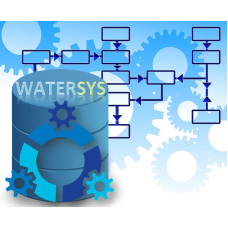Effective water resources planning and management depends on the
ability to illustrate and build water resources balance with respect to the
various water sources (surface water, groundwater, recycled water) and uses
(domestic, agricultural, industrial, energy) in a given spatial and temporal
context of a river basin. The various sources, uses, and operational
functions make up a water system with which basin administrators and decision
makers can evaluate, tailor-made, and plan for multipurpose uses of water by
taking into account changes to demand and supply due to factors related to
climate changes, demographic, economic development, living standards and
styles. However, with multiple sources (surface water, groundwater,
recycled water) and competing uses of water (domestic, agriculture, industry,
energy) under multiple factors (population growth, change in life style,
climate change, economic activities), the planning process becomes complicated
and limits the effectiveness of the decision for sustainable use and management
of water resources.
Solution
A decision framework and tool with innovative technology to plan inclusively, develop water resources economically, allocate water optimally among competing users, and manage water resources sustainable by taking into account the dynamics of population growth, climate change and economic activities. Provide a quantitative assessment and analysis of water resources demand and supply in a dynamic (time varied) situation at local, national, and trans-boundary levels.
Benefits
- Multi-sector water use accounting, analysis, and optimum allocation
- Better water resources management
- Better infrastructure planning
- Better community services
- Reduce cost and time for planning and management of system
extensions
Applications
- Planning of water demand and supply with one or more sources and
competing users, taking into account the dynamics of population growth, climate
change and economic activities
- Analyze quantitatively existing and future water demands and
supply
- Analyze water footprint of natural and/or industrial systems
- Indicate decision measures on new water allocations and
investments
- Design and specify water needs and water extractions
- Supervise and monitor development of infrastructures for water
storage, delivery, and use (irrigation, domestic, industrial, ..)
Assistance
- System schematics (prototyping)
- Physical Model (consisting of modular units)
- Develop mathematical model (one or more), which is open to the
eyes of the users
- Define model parameters and variables, set of equations governing
the model and build system model
- Test and simulate, customize and reuse the model for different
situations and predictions
WaterSys
- Product Code: WSM
- Availability: In Stock



